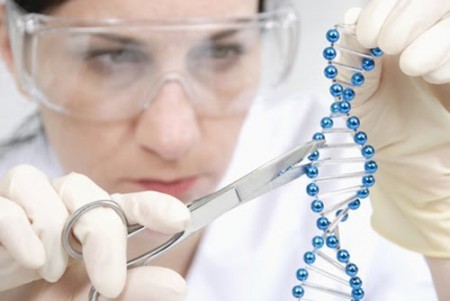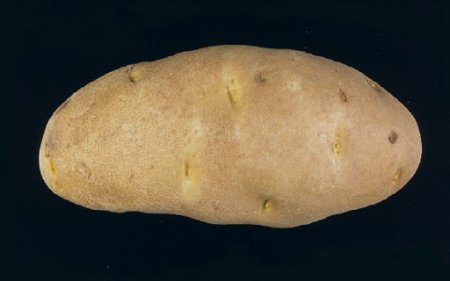April 20, 2015 – The opposition to genetically modified organisms (GMO) is all about the unnaturalness of incorporating genes from one species and putting them in another. It matters little that from time to time this happens in nature such as when a bacteria migrates into a plant root system and some of its DNA gets copied by the plant. That in the minds of those who fear GMO doesn’t have the same “Frankenfood” stigma as a Monsanto, Dow, BASF or Bayer laboratory concoction. When nature does it, it’s just science. When a company does it, it’s creating a monster.
So putting aside the technology that is GMO, what other means do agricultural scientists have to improve upon the food we eat?
Meet Ranger Russet potatoes. They are not GMO. They are genetically altered using a new technique that involves disabling a single gene. The end result a potato that stores better in the cold, lasts longer and when fried doesn’t produce acrylamide. The latter is a suspect carcinogen.
The gene was removed using TALENs (transcription activator-like effector nucleases), a technology pioneered by Editas Medicine of Cambridge, Massachusetts. The U.S. Department of Agriculture in August gave the Ranger Russet its blessing stating it would not have to go through the elaborate field testing that happens with GMO.
Ranger Russet, besides being a better potato for the reasons described above, was developed in a year. The creators of the potato state that if they had used selective breeding technology, the way plants have been improved by humans since the dawn of the Agricultural Revolution, the timeline would have been as long as ten years.
But it doesn’t end with the Ranger Russet. Gene editing could be the world’s answer to feeding the billions of mouths that will be added to our human population between now and the end of the century. Forecasts by mid-century indicate 9.5 billion. From there it gets murky…will the population continue to spiral upward or will we see it plateau and begin to fall. In any event feeding the 9.5 billion expected in the 2050s will be a colossal task based on our current agricultural practices.
The same technology is being used today to experiment with ways to supercharge photosynthesis in plants so that they grow faster. Boosting photosynthesis involves more than one gene. Fortunately researchers can look to evolution and the natural history of our planet to find potential answers. At some point around 10 million years ago, carbon dioxide levels in the atmosphere declined and this selected out plants that were more efficient users of the gas. These plants are categorized as C4 photosynthesizers. Botanists first discovered this in the mid-1960s. They noticed a difference in the way photosynthesis happened in plants like corn and sugar cane versus rice, wheat and other cereal crops. They categorized one as C4 and the other as C3.
What was the difference? C4 plants assimilate CO2 creating a molecule containing 4 carbon atoms. C3 plants create a 3-carbon molecule. C4 plants use a two-pathway approach which boosts CO2 levels while shielding the plant from the destructive effects of the oxygen byproduct. Specific genes within a C4 plant produce critical enzymes in the process. These enzymes aren’t switched on in C3 plants. Finding the genetic switch common to both types of plants and turning it on within C3s will be modern botany’s greatest contribution to food security.
In December 2014, twelve laboratories, part of the C4 Rice Consortium, announced the development of a supercharged rice exhibiting C4 characteristics. The engineering changes within the rice genome impact a family of genes involved in the development of chloroplasts, the organelles in plants where photosynthesis occurs. The altered rice plants exhibit both C4 and C3 characteristics. Scientists are still not sure how many genes need to be manipulated to create a C4 rice but they are getting closer and most believe the C4 photosynthetic revolution is coming to staple food crops within the next two decades. That will be just in time to address world population growth, and may also alleviate the impact climate change will have on conventional crop yields.

















